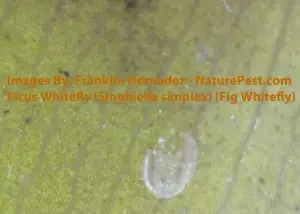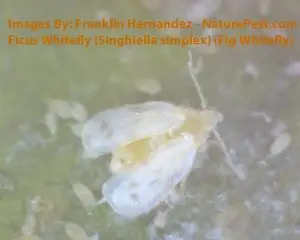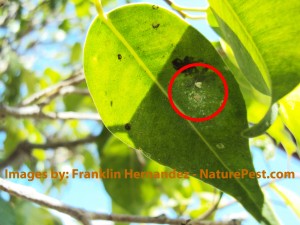Podcast: Play in new window | Download
Subscribe: Apple Podcasts | RSS
In this article you are going to explain how to identify an How to get rid of whiteflies on common woody ornamental landscape shrubs.
The Whitefly Pest
Whiteflies are common pests on many ornamental plants.
Whiteflies are tiny little sucking piercing insects that insert a needle like mouth part into the tissue of the leaf and sucks out the nutrients out of the plant. They can also transmit diseases to the plants.
There are over 1500 species of whiteflies around the world and at least 75 different species in Florida alone with Miami experiencing sever infestations of ficus whitefly and gumbo limbo whitefly.
The most recent of these whiteflies is
1. Bonders whitely detected in 2011
2. Rugrose, Spiraling or Gumbo Limbo Whitefly detected in 2009 currently attacks about 90 recorded species of plants in South Florida.
3. Ficus Whitefly detected in 2007. Currently only attacks species of Ficus.
The whitefly Life Cycle
This is a generalized life cycle of the whitefly and does not include all varieties: The general lifecycle of a pest defined by the laying of the eggs and all the stages in between until it reaches adult status at which point it is capable of mating and reproducing. The whitefly lays its eggs on the undersides of the leaves and hatch in about 4 to 12 days into active, six legged nymphs (crawlers). The crawlers move around for several hours, then insert their mouthparts into the leaves and stay there. After molting three times, they pupate and then become adults. The pupal case remains on the plant tissue even after the adult has emerged. How long it takes for the insects to develop from eggs to adults varies from 4 weeks (summer) to 6 months (winter).
• The general life cycle of a whitefly is egg, larva pupa and adult.
• A typical adult can lay 200 to 400 eggs in its life cycle.
• A life cycle can take from 4 weeks to 6 months depending on the whitefly species.
Honeydew and sooty mold
Whiteflies (as well as soft scales, mealybugs, and aphids) excrete a sugary substance called honeydew, and an unsightly black fungus called sooty mold grows on the honeydew. Besides being unattractive, sooty mold may interfere with photosynthesis, reduce plant growth, and cause early leaf drop. Sooty mold usually weathers away after an insect infestation is controlled. Ants also feed on the honeydew, so if ants become a problem, plants should be examined closely for these sucking pests.
Lets take a look at one of these whiteflies under a microscope.




For Whitefly control methods see our posts on
Natural Whitefly Control
Systemic Whitefly Control
Links and References
• Florida Whitefly: http://www.flwhitefly.org
• FDACS website: http://www.freshfromflorida.com/Divisions-Offices/Plant-Industry/Pests-Diseases/Whiteflies-Found-in-Florida
• FDACS Pest Alert http://www.freshfromflorida.com/Divisions-Offices/Plant-Industry/Plant-Industry-Publications/Pest-Alerts
• Solutions for Your Life (http://solutionsforyourlife.ufl.edu/hot_topics/agriculture/whiteflies.html)
• Factsheets on the fig whitefly:
1. http://mrec.ifas.ufl.edu/lso/IAWG/FIG/The%20Fig%20Whitefly.htm
2. http://miami-dade.ifas.ufl.edu/pdfs/urban_hort/Ficus%20whitefly%20flier%20updated%2008.pdf
• Factsheets on the rugose spiraling whitefly on gumbo limbo (http://miami-dade.ifas.ufl.edu/documents/Thegumbolimbospiralingwhiteflyfactsheet.pdf)
• Entomology and IPM for Foliage Plants (http://www.mrec.ifas.ufl.edu/LSO/bemisia/bemisia.htm)
• Insecticide Resistance Action Committee Website (IRAC) (http://www.irac-online.org)
